Saws comprise a thin piece of metal with sharp triangular teeth used for cutting wood. A back saw has an ergonomic handle and a wide blade and would have been familiar to an 18th century woodworker in England. Our 18th century French menuisiers, however, used frame saws: wooden frames that hold a narrow blade in tension.
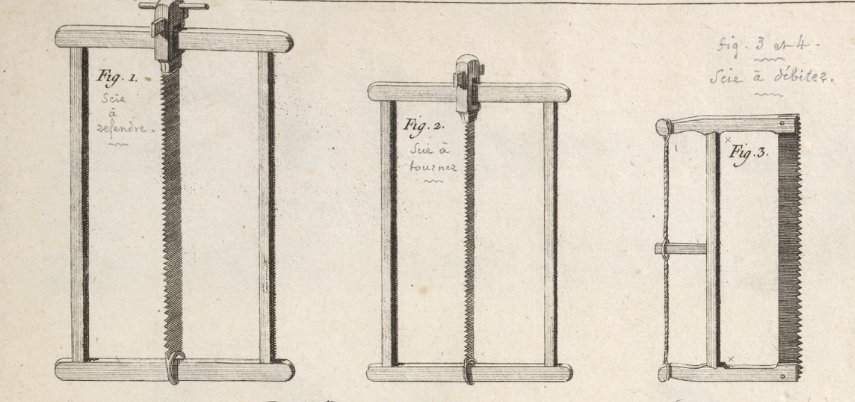
“Plate 12. Outils, propres a refendre et a débiter, le bois.” from L’Art du Menuiserie, wtr. Roubo, André Jacob engr. Milsan. New York Public Library Digital Collections. Accessed December 13, 2016.
A variety of frame saws employed in 18th century France. Note the various systems for tensioning the thin and narrow blades: an adjustable wedge for the left two and a peg and twine on the right (see bow saw for explanation).
Bow Saw
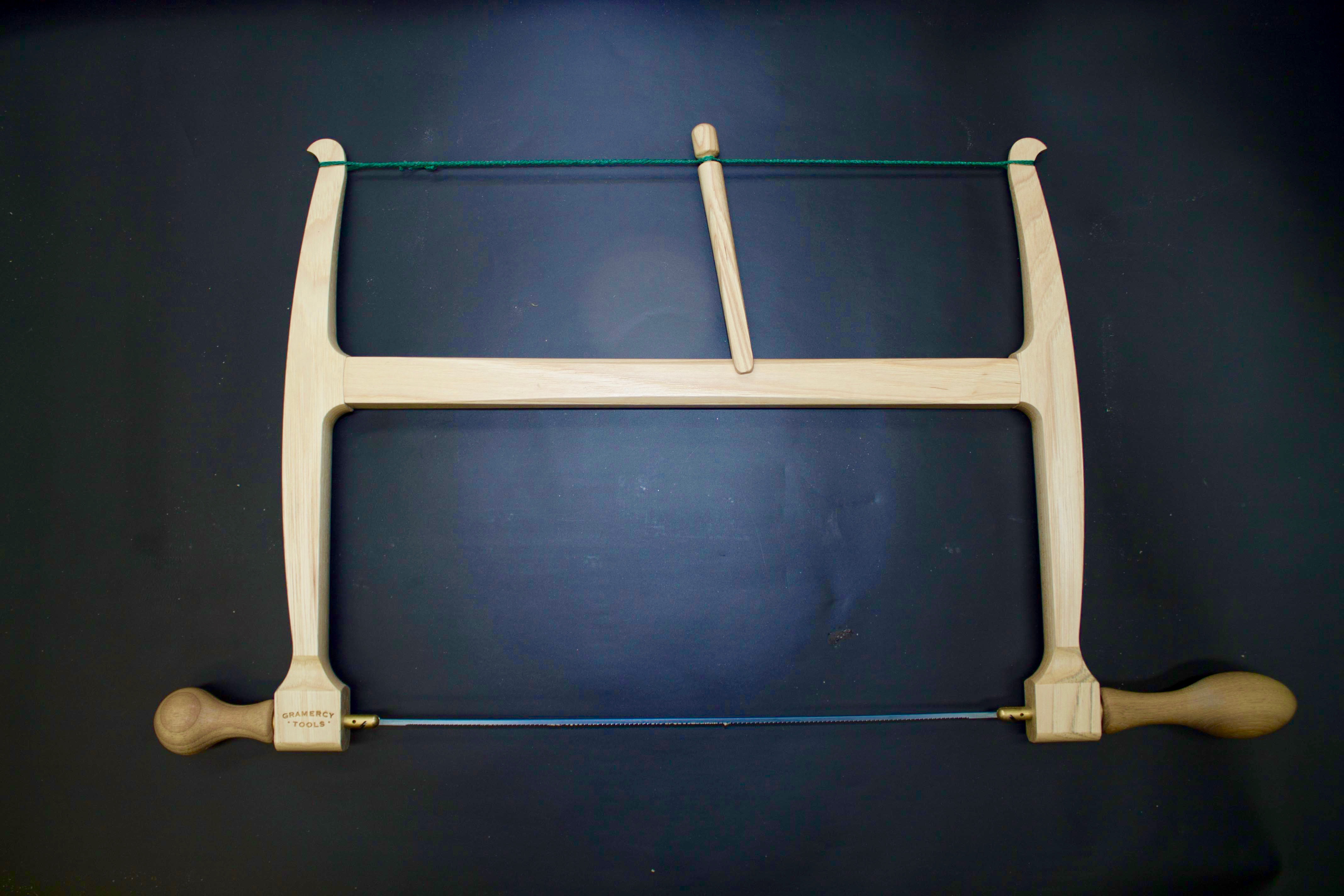
Photo: Avi Schwarzchild
A type of frame saw, the bow saw’s extremely narrow blade makes it excel at cutting curved profiles. By turning the peg, the twine pulls the two lateral pieces inward which levers the blade into tension.
Carcass Saw
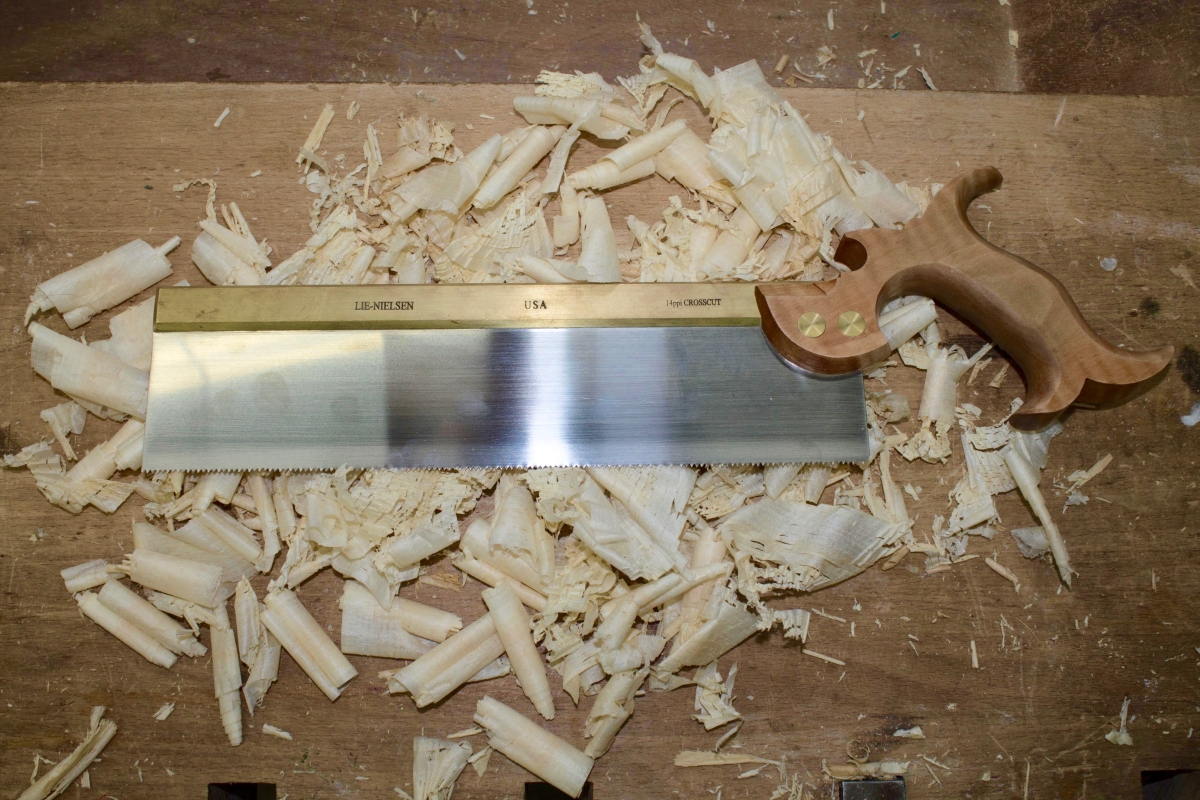
Photo: Avi Schwarzchild
A smaller back saw used for general tasks such as cutting joinery and dimensioning lumber to length. Note its brass spine which keeps the blade straight and taut.
Flush-Cut Saw
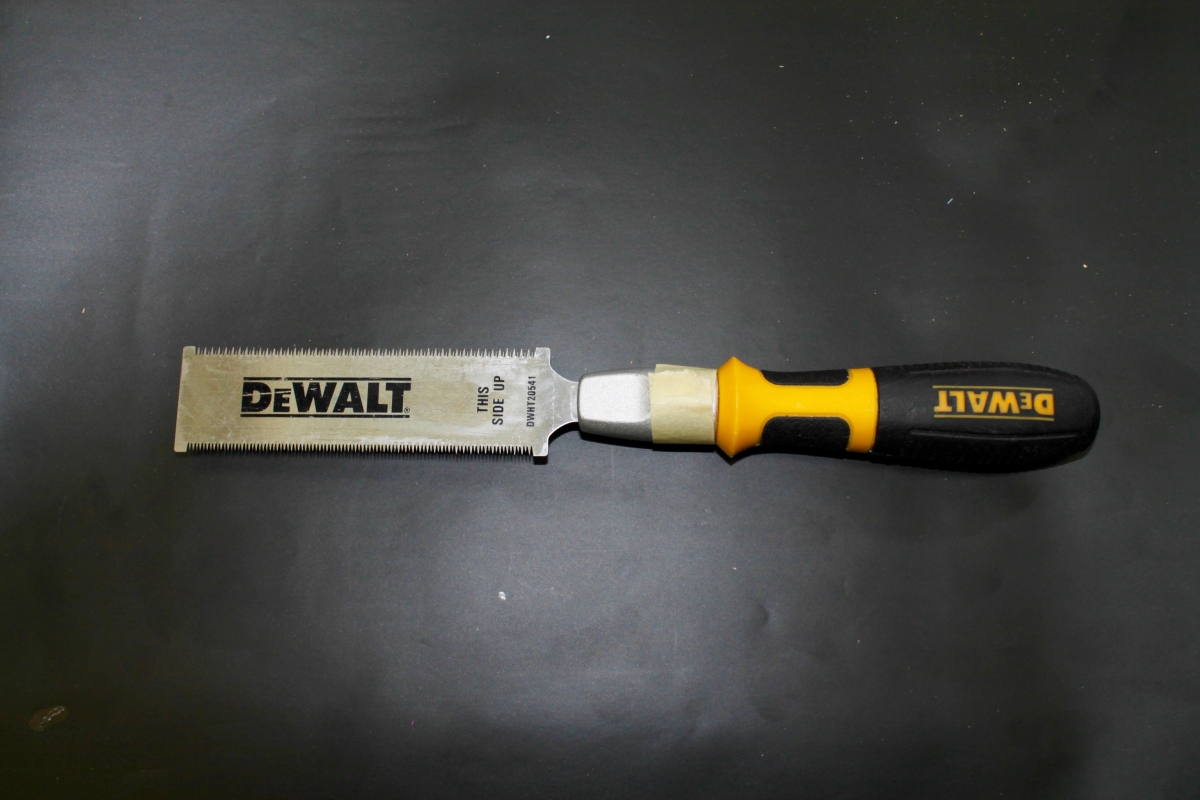
Photo: Avi Schwarzchild

“Plate 22. Outils propre a cheviller et a poser l’ouvrage., wtr. Roubo, André Jacob engr. Haussard, Catherine. New York Public Library Digital Collections. Accessed December 13, 2016.
With its thin flexible blade, this saw excels at removing any small, protruding piece of wood (e.g. a proud dowel). Note the similarity between the modern saw (upper) and the Roubo engraving (lower).
Panel Saw
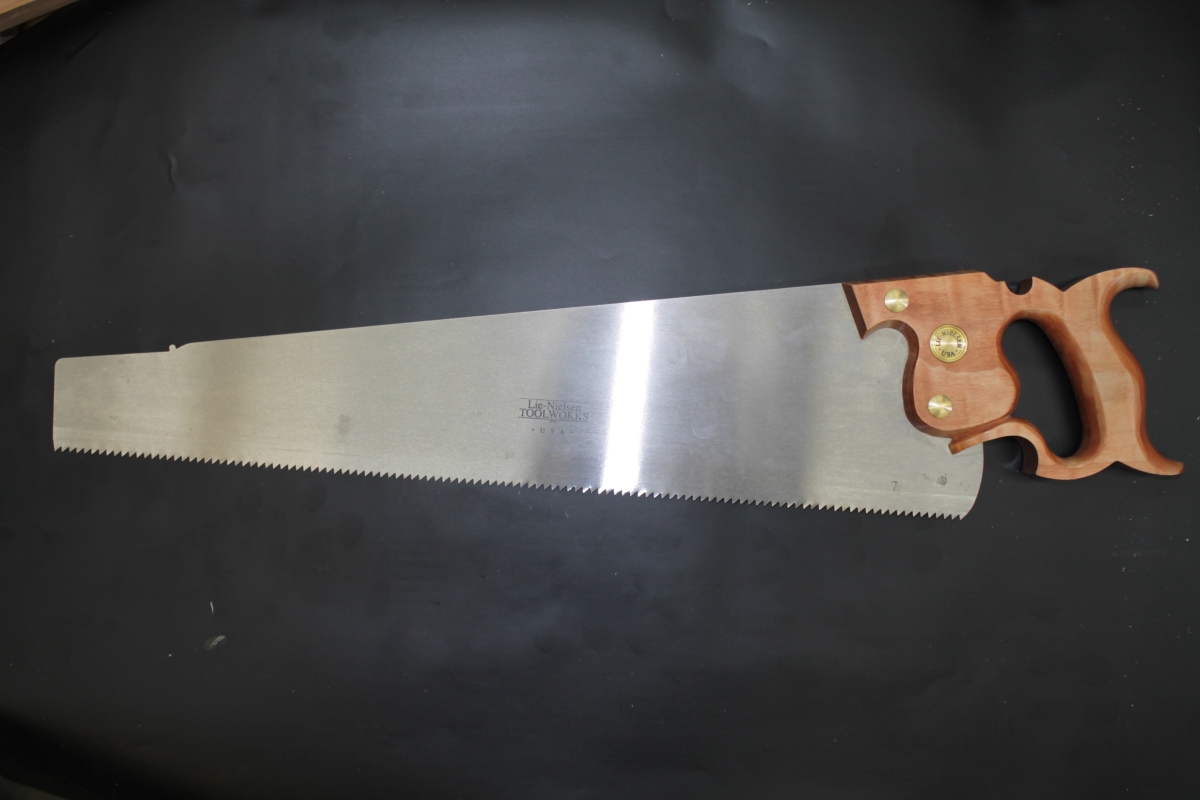
Photo: Avi Schwarzchild
A long back saw with large teeth, the panel saw is designed for dimensioning a board’s width by cutting along the grain. Note the lack of a brass spine. Held vertically instead of horizontally, gravity keeps the blade straight while cutting.